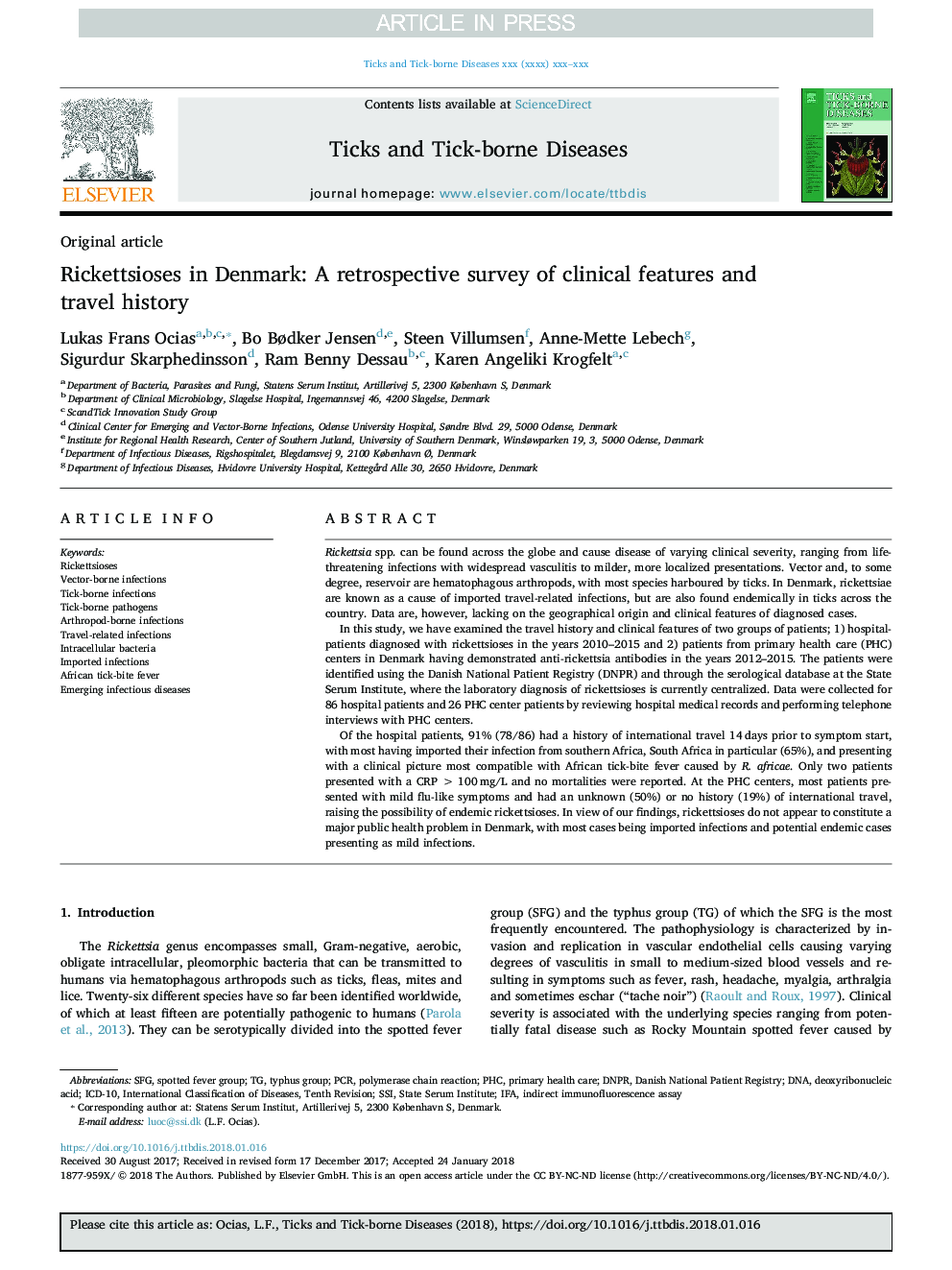| Article ID | Journal | Published Year | Pages | File Type |
|---|---|---|---|---|
| 8507243 | Ticks and Tick-borne Diseases | 2018 | 7 Pages |
Abstract
Of the hospital patients, 91% (78/86) had a history of international travel 14â¯days prior to symptom start, with most having imported their infection from southern Africa, South Africa in particular (65%), and presenting with a clinical picture most compatible with African tick-bite fever caused by R. africae. Only two patients presented with a CRPâ¯>â¯100â¯mg/L and no mortalities were reported. At the PHC centers, most patients presented with mild flu-like symptoms and had an unknown (50%) or no history (19%) of international travel, raising the possibility of endemic rickettsioses. In view of our findings, rickettsioses do not appear to constitute a major public health problem in Denmark, with most cases being imported infections and potential endemic cases presenting as mild infections.
Keywords
RickettsiosesSFGIFASSIICD-10DNPRPHCDNAindirect immunofluorescence assaydeoxyribonucleic acidIntracellular bacteriaEmerging infectious diseasesTick-borne pathogensDanish National Patient RegistryInternational Classification of Diseases, Tenth RevisionTick-borne infectionsImported infectionsVector-borne infectionsPrimary health carepolymerase chain reactionPCRspotted fever group
Related Topics
Life Sciences
Agricultural and Biological Sciences
Animal Science and Zoology
Authors
Lukas Frans Ocias, Bo Bødker Jensen, Steen Villumsen, Anne-Mette Lebech, Sigurdur Skarphedinsson, Ram Benny Dessau, Karen Angeliki Krogfelt,
